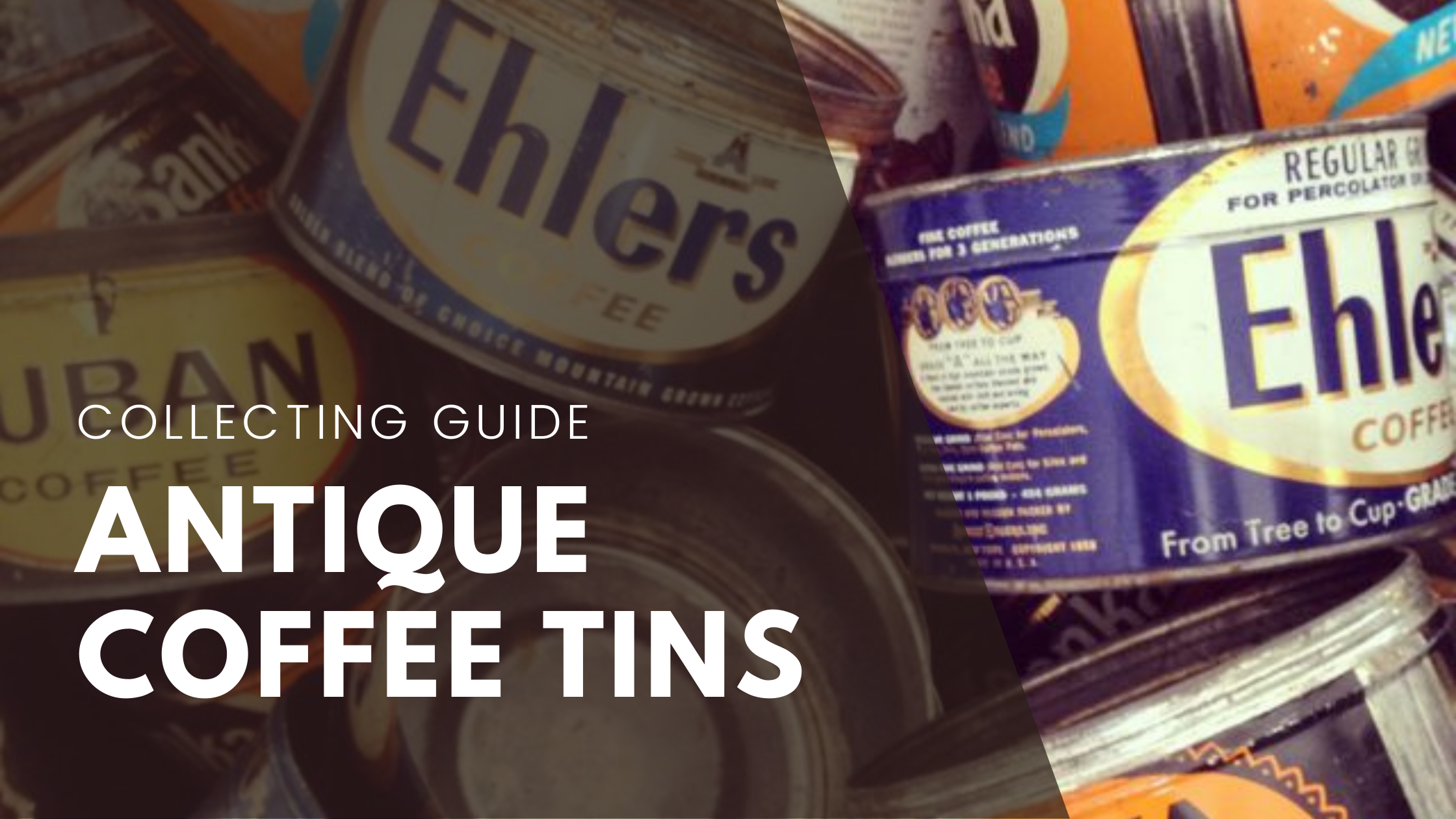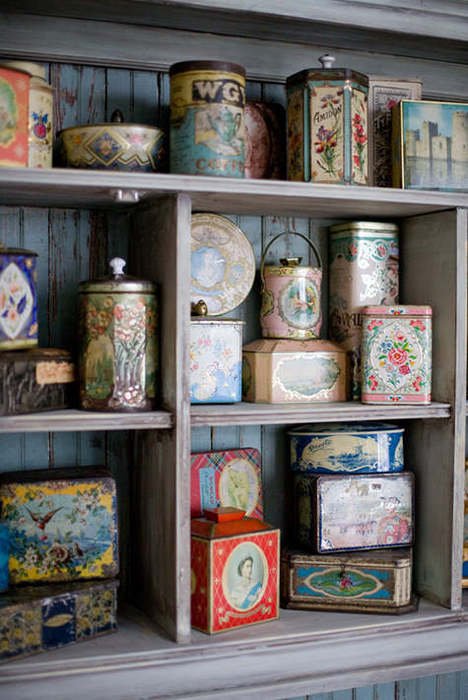Antique Coffee Tins - A Beginners Guide To Collecting
The coffee tin came into being as long ago as the early 1800s, at a time when most people bought fresh green coffee beans to roast and grind fresh at home. Pre-roasted and packaged coffee became popular much later in the late 1880s. Over the years, coffee containers were produced in many shapes and sizes; they could be square, cylindrical, rectangular, or trapezoid-shaped and ranged in size from one-ounce sample tins to large bins holding more than fifty pounds of coffee. Coffee came in boxes and in pails with metal handles in addition to tin; some containers were made of cardboard, and others featured paper labels over the tin. The lids also can be in various styles that evolved other the years. The early tins had hinged lids or lids that could be pulled off. Later tins were made with pry lids, slip lids, and lids that screwed off and on; these were followed by lids that utilized keys for removal.
The graphics and colors also evolved over time, from the plain early tins that occasionally had paper or stenciled labels to tins that were produced using a two-color tintype process. With the two-color process, black was usually the dominant color which was used with green, red, blue, or yellow. By 1914, the new process of chromolithography allowed for the mass production of stunning multi-colored tins featuring wonderful graphics. As coffee companies experimented with ways to attract customers, they realized that they could sell more coffee by producing reusable tin containers with beautiful graphics. Not only was this very inexpensive advertising it also increased the likelihood that the tin would be saved and reused for some other purpose. Tins were often reused for storing any number of household items, such as nails, buttons, or even some other food products. These tins also made wonderful display pieces which help to explain why some tins survived in such conditions for generations.
Today coffee tins are highly collectible. In fact, they have become one of the most sought-after types of antique advertising collectibles, second only to tobacco tins. Although we call them tins, these containers were not made entirely of tin but were initially made from tin-plated sheets of iron. Later iron was replaced by steel. It is estimated that around two thousand different examples of coffee tins were produced over the years, with countless millions sold. However, despite the large number of tins manufactured, only very small percentages have survived. Of those that did, many of the more desirable ones have become almost impossible to find due to the many collectors competing for them. This scarcity and popularity have caused prices to soar dramatically in recent years.
Determining a Tins’ Value
The value of any one tin is based on many elements, which can vary greatly; rarity, age, and condition are the most important. Prices can range from under a dollar to thousands of dollars for a single tin. A very rare, old tin, in mint or near mint condition, can fetch thousands, while the same tin in poor condition may only be worth a few dollars. The more elaborate lithographed one-pound "Tall Coffee Tins” range in price from $150 to over $1,000, while those with plain lettering will generally sell from $75 to $150. Key-wind style tins can still be found for under $25, but the ones with appealing graphics can easily fetch more than $100.
When grading tins, using a numbered grading system that many other collectors have adopted is helpful, with grades running from 1 – 10.
10 = Mint
9.5 = Near mint
9 = Outstanding
8 = Excellent
7 = Good
6 = Poor
Generally, anything less than grade 8 is not worth buying if you have a view to resell one day; the tin should be free from dents, fading, or rust.
Resources For Coffee Tin Collectors
Luckily for collectors, tins can still be found at the many annual shows and auctions held nationwide. Occasionally a great find can be uncovered at a flea market, but this is becoming rare. Antiques and collectibles shows are still a suitable venue for finding tins. However, the Indianapolis Antique Advertising Show is a terrific place to find coffee tins and other high-quality antique advertising. This national show has a forty-year history, held three times a year at the Indiana State Fairgrounds with over one hundred dealers from 38 states selling rare, quality advertising memorabilia.
Another great place to find beautiful tins is the annual convention of the Antique Advertising Association of America (A.A.A.A.). The annual conventions are held in different cities around the country, allowing members to share their knowledge, buy, sell, and trade their treasures with each other. The A.A.A.A. publishes an outstanding newsletter which you can receive as a member; the annual membership fee is $40.
Coffee Tin Price Guides
Many price guides can be helpful for new collectors, but prices are constantly changing, so they are best used to determine a general idea of value.
Antique Advertising by Rich Bertoia
Antique Tins by Fred Dodge
Modern Collectible Tins by Linda McPherson




